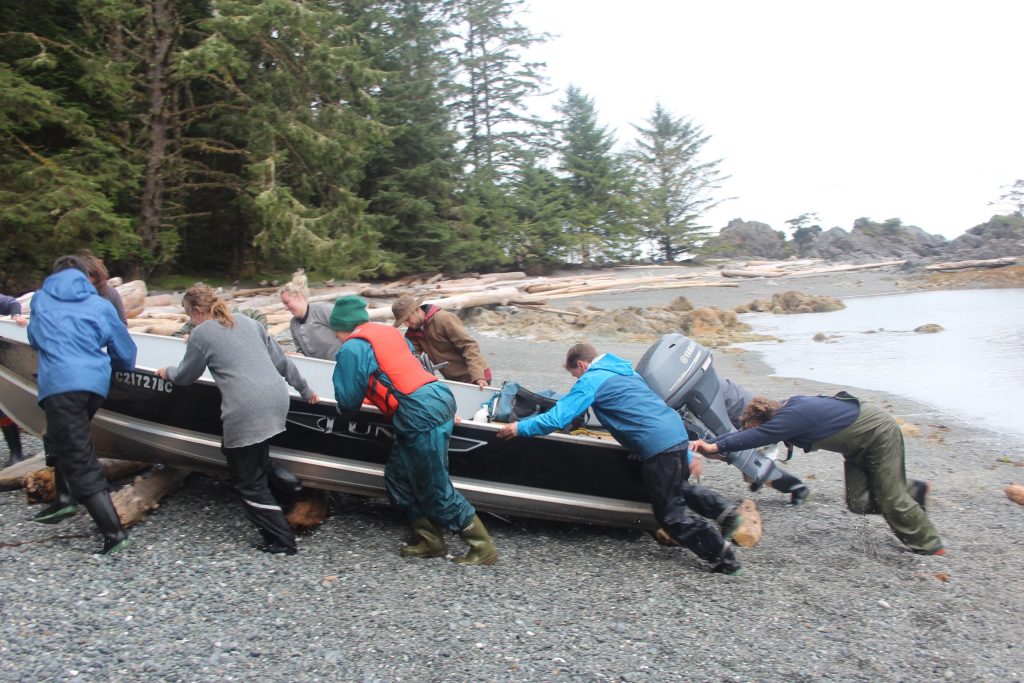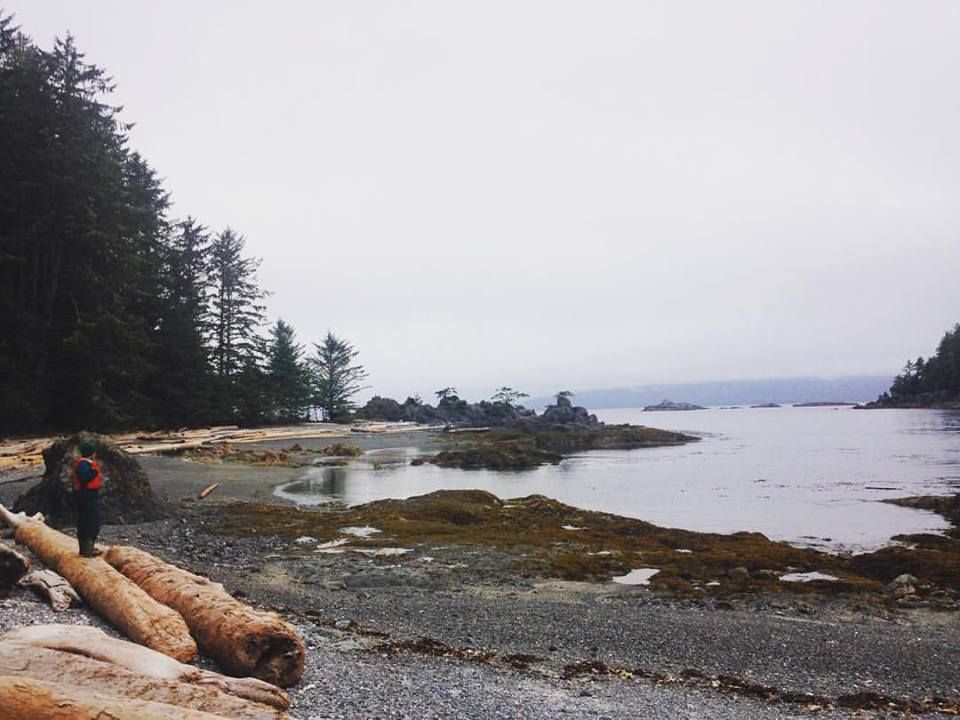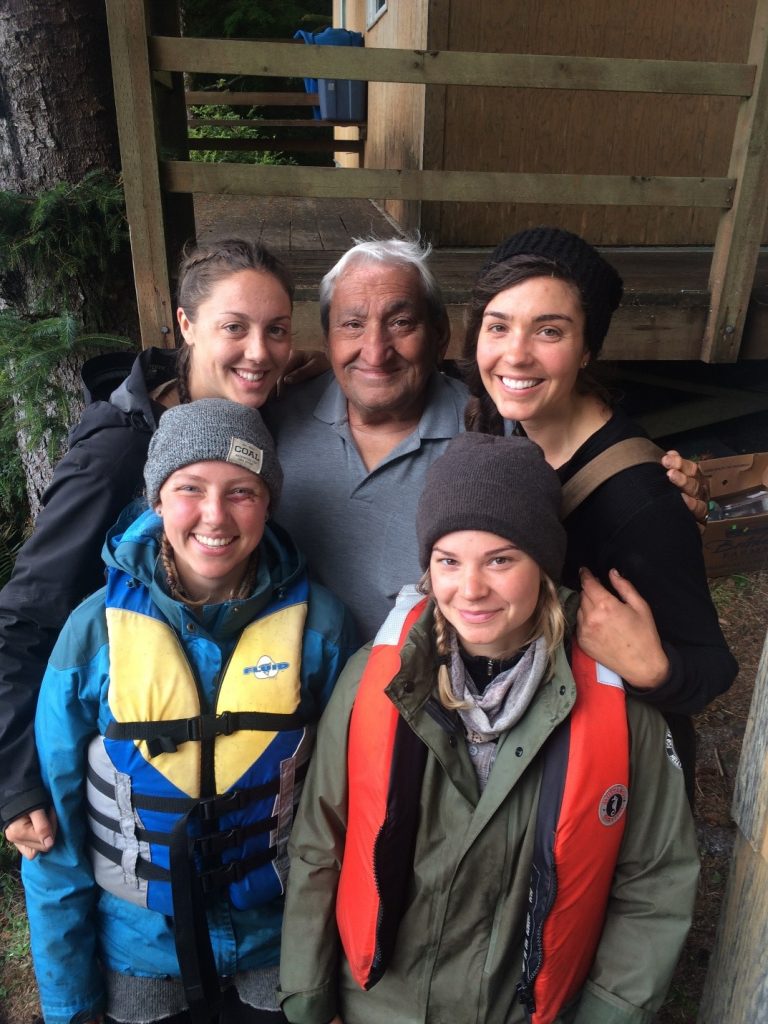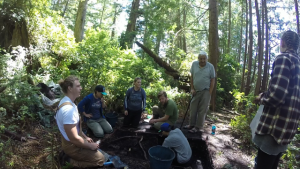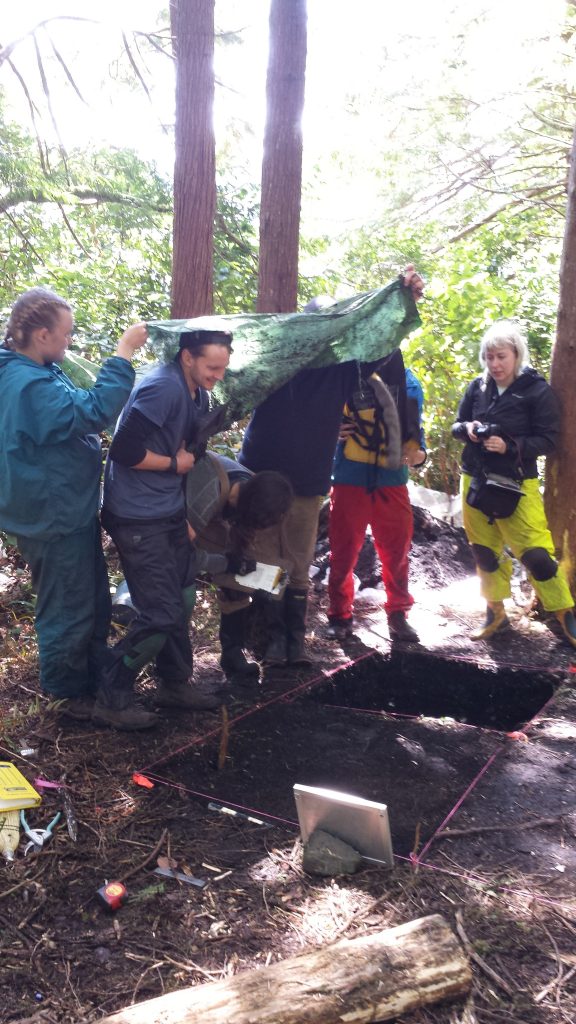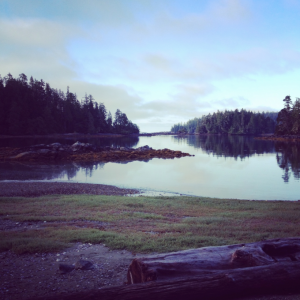The two weeks I spent with UVic’s archaeological field school in the Broken Group Islands have been nothing short of amazing. From the spectacular scenery and reverence inspired by our visit to the ancient site of Tseshaht, to lunchtime stories with Denis St. Claire (always punctuated with hilarious tangents and frequent dessert breaks); from the incredible Tedley Do-right, fixing anything and everything and still having time to teach us knots around the fire, to an evening spent crowded under an awning, watching a thunderstorm roll in; from the meaningful words spoken by the Beachkeepers and David, to Wanda’s feasts, to our light-blocking acrobatics during field photos, to our numerous after-dinner guest lecturers, complete with “cutting-edge” audiovisual augmentation. Finally — and only because I have to cut this off somewhere — from the excitement of plunging that first shovel into the ground, to the satisfaction of dumping that last bucket of backfill, this experience has given me so many wonderful, lasting memories. 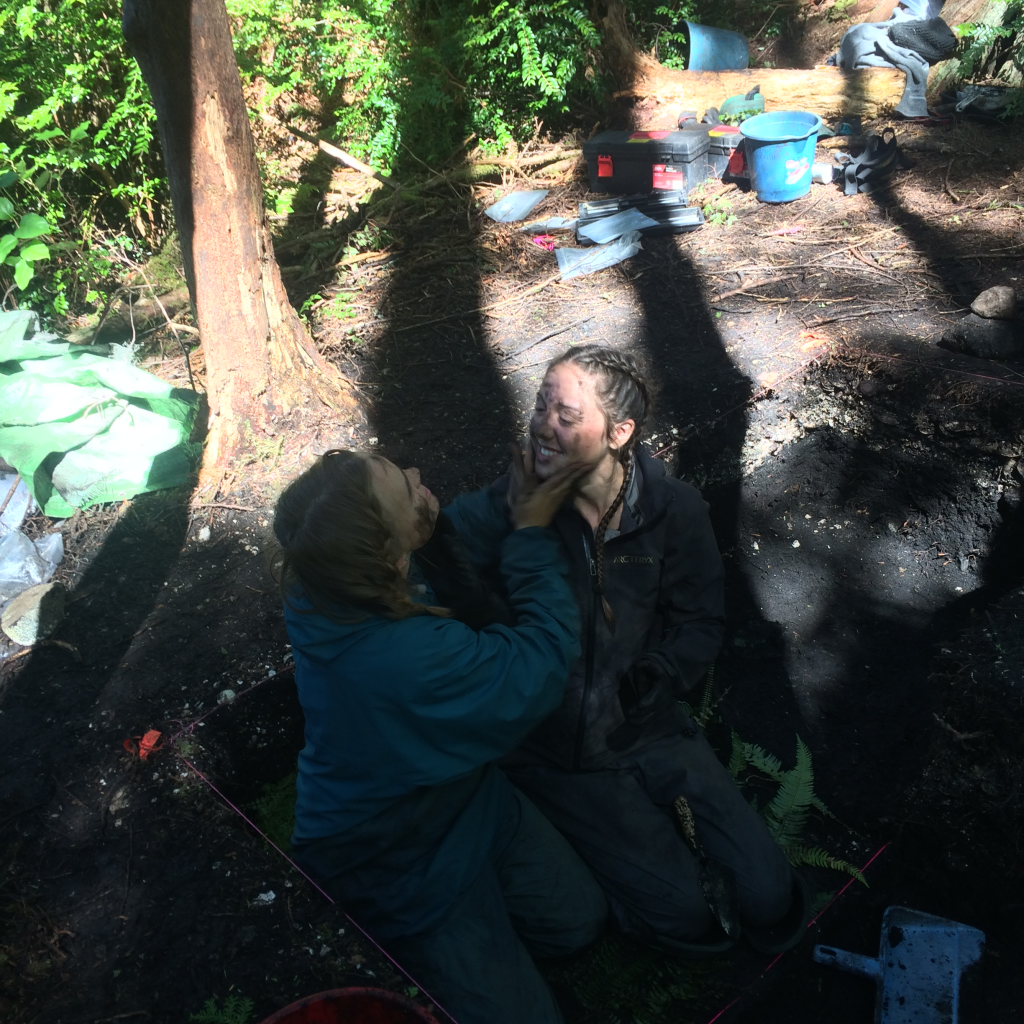
This picture speaks to two of the most important messages I am leaving with. To provide the reader with a little bit of context, the picture was taken towards the end of our excavation. Just before I took it, we had heard that Denis was talking to some visitors to the site, one of whom was from The Vancouver Sun. In attempts to better embody the quintessential image of the “archaeologist” — because surely we were going to make the front page — Sage and Tessa decided to put a little extra dirt on each other’s faces.
Firstly this picture represents the knowledge that, more than anything else, it has been the people I’ve met on the field school who have made it what it was. This project is the product of the collaborative efforts of numerous individuals and organizations, including the Tseshaht, Parks Canada, and many others who have offered their time and expertise to keep things running smoothly. Equally important, the project would not have been what it was without my fellow students, who have fully transitioned from a group strangers to an Integrated Team of Readiness. Everyone has been such a pleasure to work with, and the experience has reinforced the importance and value of building relationships and working collaboratively.
Secondly, and a bit more abstractly, this photo represents the idea that archaeology is just as much about the present and the future as it is about the past. Throughout the excavation we had many visitors to the site, like the ones we had on the day that the photo was taken. Everyone was so interested in our work and it showed me that there is an opportunity in archaeology not just to learn about the past, but to engage with people in the present. One of the key lessons that Denis shared with us was the inaccuracy of the idea that places like the Broken Group Islands are — and should be valued only as — “remote wilderness” devoid of human presence. He tied this to the general tendency to view First Nations in the present as distinctly divided from those in the archaeological record. In particular, our day trip to Tseshaht really drove that point home. What I see now is the role that archaeology can have in educating and building public interest in these sites in a way that pays due respect to the multiple millennia of human habitation in the area, as well as to the austere beauty of the environment and wildlife.
